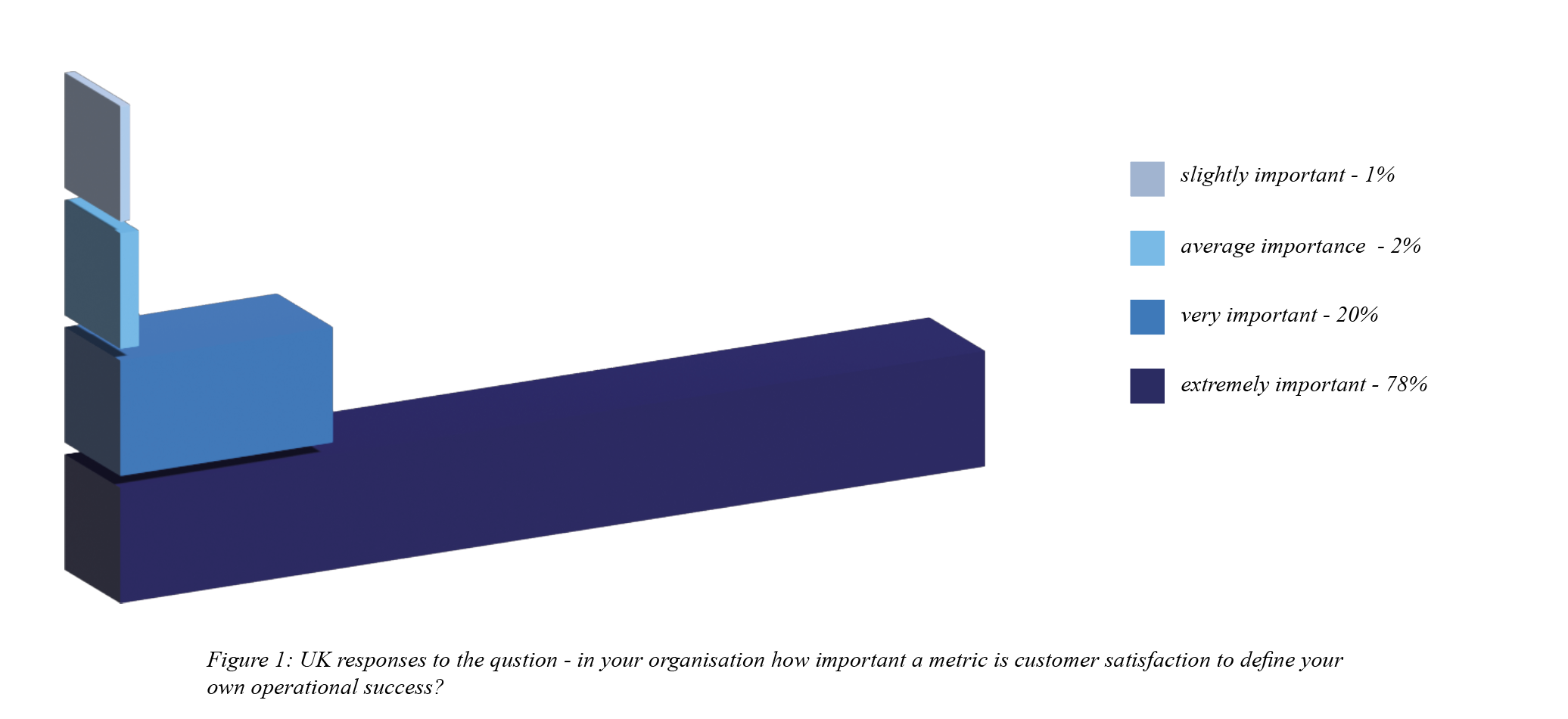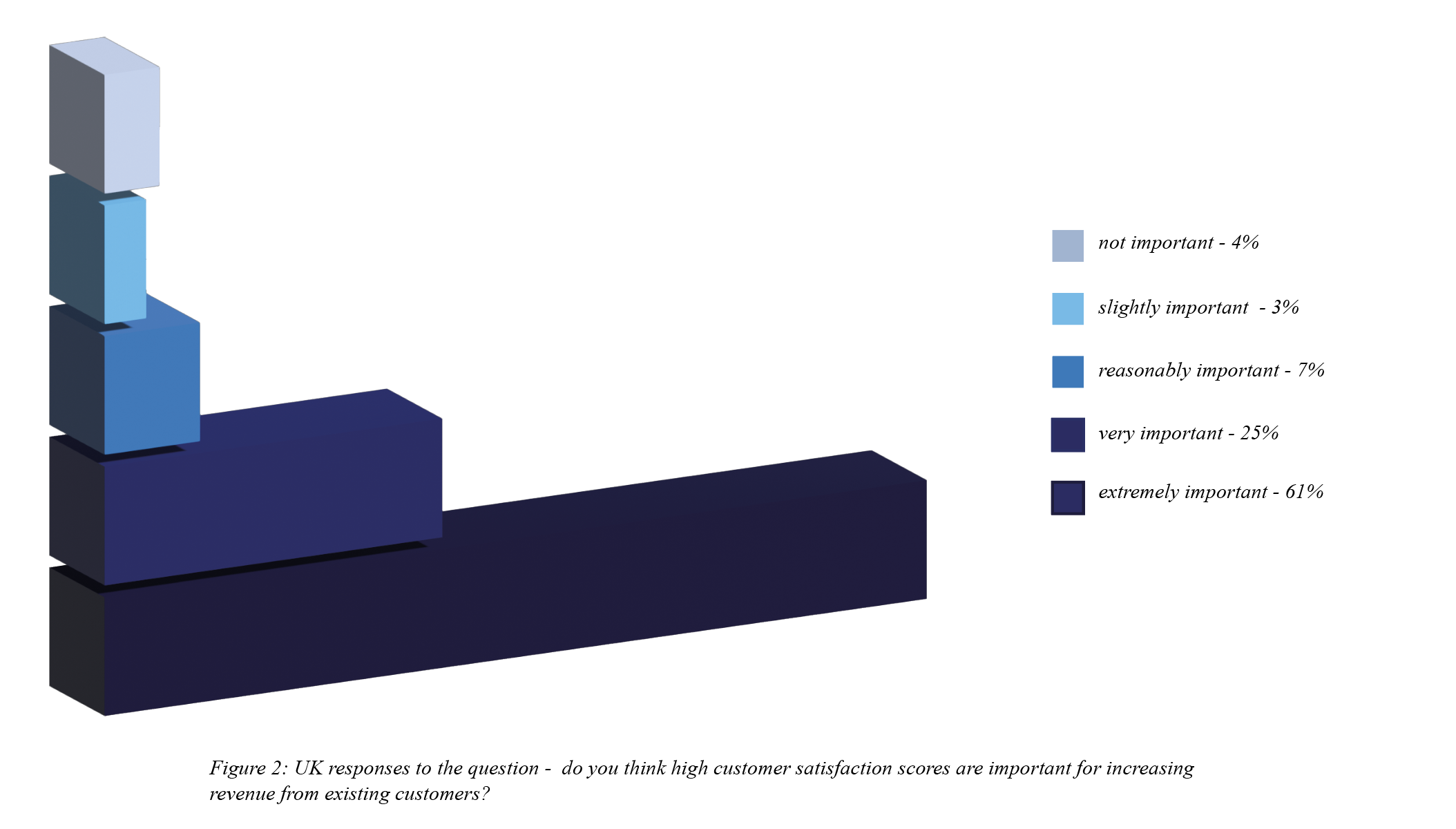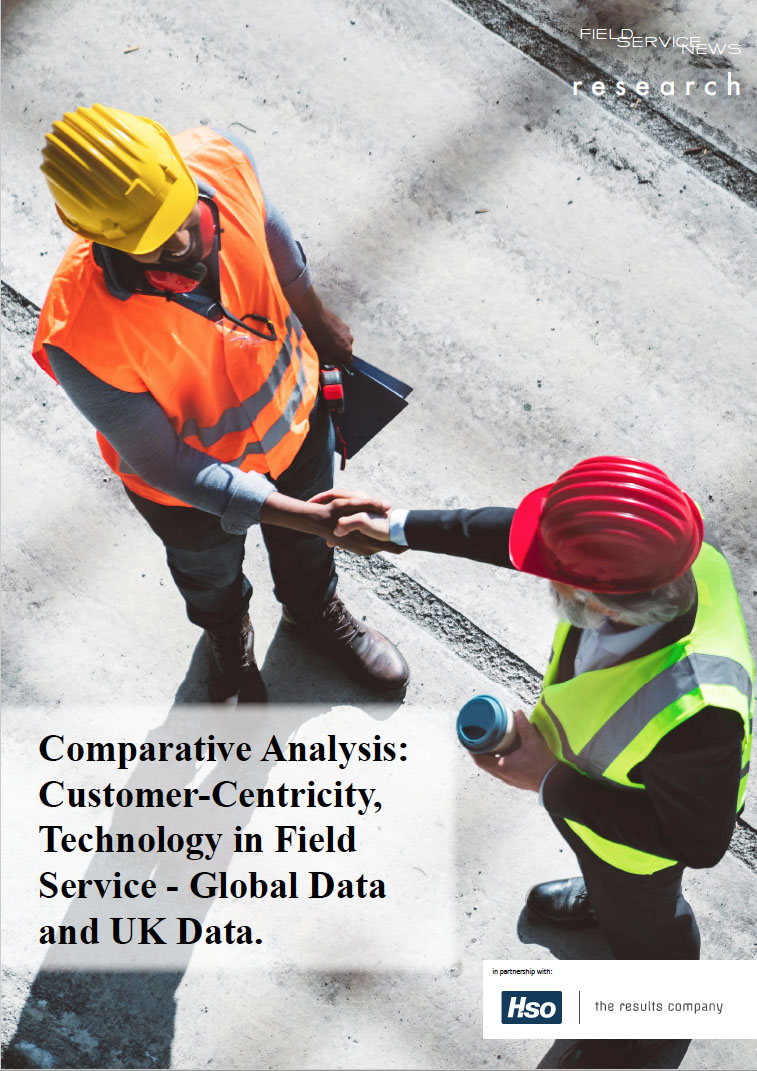Comparative Analysis: Importance of CSAT on Growth Strategies
In the first of a new series of comparative analyses across a global study and a follow-up UK study hosted by Field Service News Research in partnership with HSO, we look at trends relating to the importance of customer satisfaction metrics…
The first area we looked at in our initial report was whether the shift we had seen in previous studies, where Customer Satisfaction (CSAT) metrics were becoming deemed as at least as necessary, if not more important than operational metrics has continued in the post-pandemic era.
However, while in previous studies the focus on such metrics has often been limited to the impact on field service delivery, with the back-drop of increased servitization being revealed in a number of recent studies, we also wanted to understand if the increasing importance of CSAT metrics measured also directly related to the top-line strategies of field service companies.
One important mechanism we selected to help us determine the importance of CSAT metrics to broader business strategic aims, would be to understand how these align with revenue growth strategies.
To achieve this, we asked our respondents a series of questions based on various revenue growth strategies to understand the importance of CSAT metrics and, of course, performance in defining success within these areas.
The study findings in the original global study reinforced our initial hypothesis that we would see the shift to CSAT, not only as an outline of divisional and operational success, but also aligned to the growth strategies of field service organisations. The first area we explored in the study was how critical customer satisfaction is when defining operational success internally.
73% of the field service organisations within the global study outlined that customer satisfaction is ‘extremely important’ to defining operational success within their organisation. Furthermore, 22% of organisations stated it was ‘very important’ within their organisation, and only 4% said that such metrics were only of average importance.
In comparison to the global study, the UK focused data revealed a similar set of findings – although the results were even more pronounced. Over three quarters (78%) of respondents to the UK study responded ‘extremely important’ in response to this same question while a fifth (20%) stated very important. (fig.1 below)

Of course, as we pointed out in the earlier report this is perhaps of no surprise; however, the data does firmly reinforce the significance of CSAT as a metric to define operational success.
However, it was when we looked at the next set of responses in the first report that we really began to see just how deeply embedded customer satisfaction scores are within growth strategies.
The first of these results again showed a trend we would have anticipated.
Over two thirds (71%) of field service organisations identified stated that they believed such metrics were ‘extremely important’ when it comes to retaining business.
Just over a quarter (26%) said such metrics were ‘very important’, and 4% felt they were ‘reasonably important’. Given that consistently poor customer service is widely known to result in customer leakage, this is not an unexpected finding.
Again we see a similar contrast with the UK specific findings with over three quarters (75%) of respondents citing the ‘extremely important’ response rate and similar numbers to the global data stating very good and reasonable (UK data was 19% very important and 5% stating reasonable importance).
So far as we look at the comparison between the two data sets, we see similar trends, however with an even greater weighting on the importance of CSAT metrics amongst the UK participants.
However, the truly enlightening discovery of the first study was discovered when we looked at the responses to the following two questions within the study.
Firstly, we asked our respondents how important they saw customer satisfaction scores for increasing revenue from existing customers. As with the previous questions in this opening segment of the study, we would likely anticipate that most companies would see a positive correlation between these two facets of service delivery. Happy customers are more likely to be open to other service offerings being introduced.

Indeed, the original study’s findings corroborated this assertion. 57% of respondents stated that customer satisfaction was ‘extremely important’ in this area, while 30% said it was ‘very important’ and 12% stated it was ‘reasonably important’.
The UK responses reveal a slightly different sentiment, however. As with previous studies we see an increase of those who responded extremely important with 61% of UK respondents citing this response. 25% of UK respondents stated they felt it was ‘very important’ which is slightly below the global response. (fig 2. above)
However, it is in the less cited responses that we see actual divergence.
While those respondents answering reasonably important or lower are similar in both studies (12% in global 13% in the UK) within the global study all respondents in this bracket were in the ‘reasonably important’ group while in the UK data we see this group split with 3% stating these metrics are only slightly important to increasing revenue from existing customers and 4% stating these metrics are not important at all.
This divergence of trend is also mirrored in the final question within this section of the study. In response to the question ‘do you think that high customer satisfaction scores are important for winning new business?’ Over half the global respondents (56%) of field service companies within the study stated they felt such scores were ‘extremely important’. Again slightly more of their UK counterparts (61%) gave the same response.
In comparison, 32% of global respondents said these were ‘very important’, compared to 23% of UK respondents while 11% of both groups stated such metrics were ‘reasonably important’.
However, it is only within the UK group that we see responses that such metrics are not important at all for winning new business – which 5% of respondents stated.
Our initial commentary on the global data was that this indicates field service organisations align high customer satisfaction scores with growing revenue amongst their existing client base, and their ability to deliver service excellence was a clear differentiator to allow them to win new business.
Ultimately, the study data is clear – customer satisfaction is now positioned at the heart of both retaining existing business and winning new business.
In comparison, the UK findings largely mirror this assertion. It would seem that the difference is largely that those who believe in the importance of CSAT metrics do so more forcefully with the response ‘extremely important’ being more prevalent across the board.
However, it also seems that the small group who do not feel these metrics are of use in winning or increasing new revenue are equally more wedded to that belief with the variance in the last two questions being amongst those who saw such metrics as reasonably useful in the global study, being balanced with more respondents seeing no value in the metrics in the UK study. It should be noted though that in both studies these latter groups were in the significant minority.
Across both studies however, we saw that increasing revenue from both existing customers and winning new business were parallel aspects of revenue growth strategies. 59% of field service companies within the global study, and 56% of UK organisations state that their growth strategy is evenly balanced alongside these two areas of revenue growth. (fig 3. below)

As we concluded in our original report, the findings in both studies seems clear; amongst field service organisations, high customer satisfaction scores are seen as an indicator of internal operational success and a crucial mechanism within revenue growth strategies.
In short, CSAT measurements have become critical amongst field service.
In the next feature in this series we will be exploring the trends in the metrics being used to measure customer satisfaction and how these are being leveraged.
Want to know more and don’t want to wait? Field Service News subscribers can access the full 20 page comparative analysis report on the button at the top of this article.
This Field Service News Research study is sponsored by HSO

This content is available exclusively for FSN Premium members. Please either log-in or subscribe for access

Data usage note: By accessing this content you consent to the contact details submitted when you registered as a subscriber to fieldservicenews.com to be shared with the listed sponsor of this premium content HSO who may contact you for legitimate business reasons to discuss the content of this white paper.


